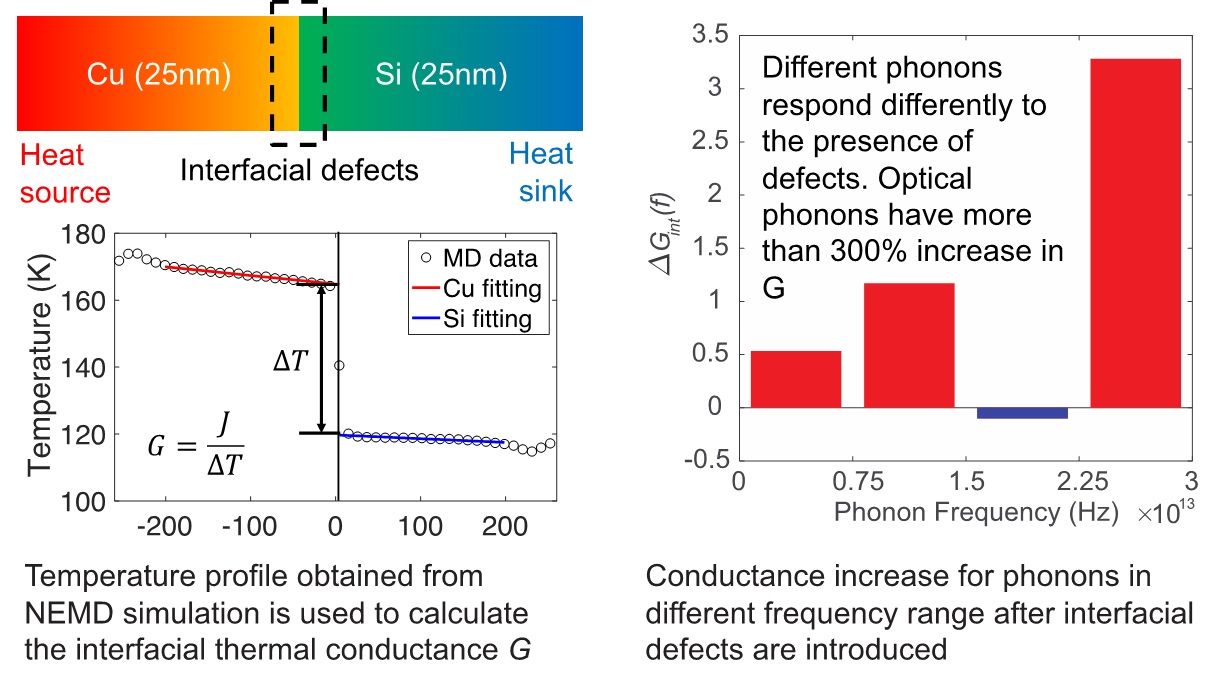CDI Modeling of Low Temperature Heat Transfer
Return to Functional Materials Use Case
PI: Anne M. Chaka
Project Team: Zexi Lu, Peter Sushko
Project Term: November 2019 to September 2021

Key Science Questions:
- How are the dynamics of energy flow carried by phonons through bulk materials and across interfaces affected by defects and microstructure at very low temperatures?
- How does fundamental phonon behavior at cryogenic temperatures impact material performance properties for several fields of basic research, including quantum information science (QIS), basic energy sciences (BES) and high-energy physics (HEP)?
- Can phonon behavior be used as a probe to monitor dynamical changes such as oxidation in device materials?
Project Description: The objective of this project is to develop the molecular dynamics capabilities to model heat transfer and phonon behavior at ultra-low temperatures to understand materials and interfaces to engineer better devices of current and future interest to PNNL programs and sponsors. The modeling work is closely integrated with the experimental CDI Project “Dynamics of Quantum-Influenced Material Properties” and Machine Learning to help guide and interpret the ultra-low temperature experiments in PNNL’s first dilution refrigerator. We are working towards performing groundbreaking cross-validation of modeling and experiment for cryogenic heat transfer on the same system (epitaxially grown aluminum on single crystal silicon).

The project team is developing the following capabilities:
- NonEquilibrium Molecular Dynamics (NEMD), normal mode analysis, and spectral energy density capability for rapid screening of the impact of interfaces and defects on phonon transport and scattering at warmer (>10 K) temperatures.
- Wave Packet Formalism to simulate long wavelengths at milliKelvin temperature and enable quantification of a phonon’s % transmission versus reflection as a function of wavelength at an interface, as well as scattering due to defects, oxidation, microstructure, and impurities.